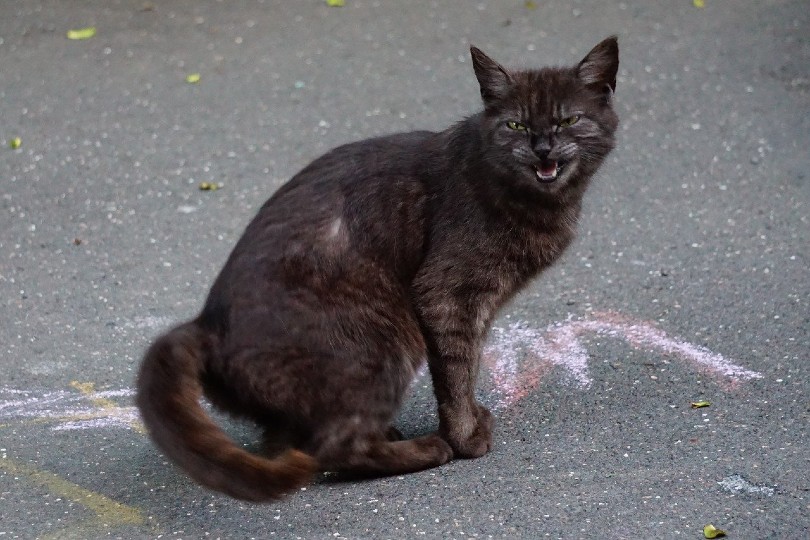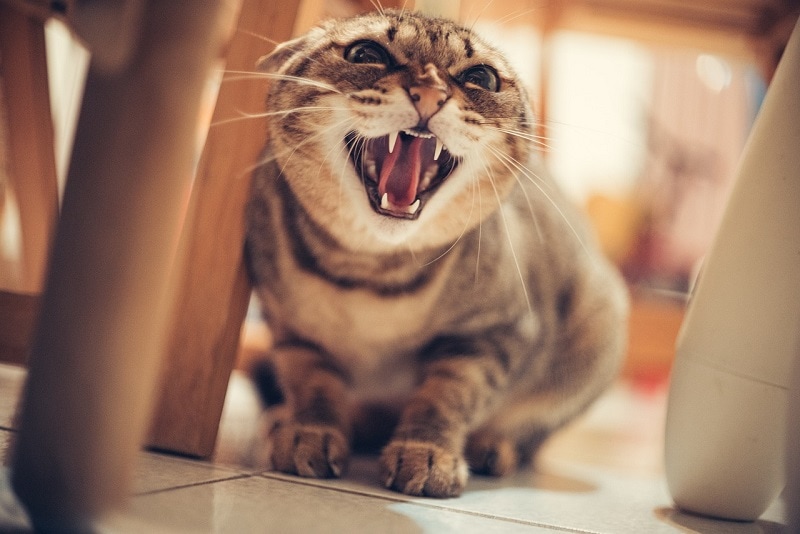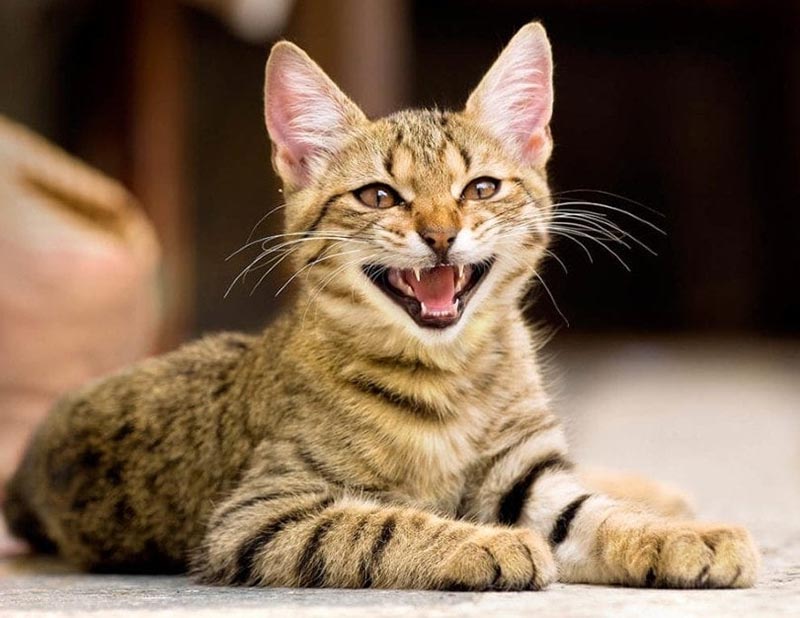One of the challenges of living with cats is understanding their behavior. While they can’t verbally tell us how they’re feeling, they are constantly communicating with us through their sounds and body language.
Cats can make several sounds, including hissing. They hiss when they are playing and when they’re feeling threatened or aggressive. So, it’s essential to look for other context clues to determine if a cat is feeling playful or angry.

Why Do Cats Hiss?
Cats can hiss as a warning to back off, but they can also make the same noise or a similar sound when playing. This is because cats can have fun through play-fighting. Cats in the same social group can have rather rowdy play sessions that may look aggressive to humans.
However, as long as the cats display other playful behaviors, they’re in a safe environment. An occasional hiss is completely normal behavior, but if the hissing becomes more frequent, it can become a precursor to an aggressive fight.
Other Behaviors Cats Display When Playful
When a cat’s feeling playful and friendly, it’ll have body language cues that reflect the feelings. First, playful cats will have their ears up and pointed forward. They’ll look more alert and may even have dilated pupils.
Cats who want to play may also look ready to pounce. The fronts of their bodies will be crouching low to the floor while their hind legs will be raised. Their tails will also be low to the ground and may occasionally rise up and flicker.

Playing is an important part of keeping your cat mentally and physically engaged, and a great toy will make it much easier. We like Hepper's Catnip Stick Toys because they're sturdy enough to handle intense play and completely filled with organic catnip. You'll love the fun range of pastel colors and your cat will enjoy the prey-like shape!
At Catster, we’ve admired Hepper for many years and decided to take a controlling ownership interest so that we could benefit from the outstanding designs of this cool cat company!
Other Behaviors Cats Display When Angry
Sometimes, a cat may play too roughly and start agitating the other cat. Agitated and angry cats will hiss more as a warning for others to back off. Along with increased hissing, an angry cat will try to look larger and more threatening. Usually, they’ll raise their hair to look bigger. Its tail will also be stiff or curled around its body.
While playful and alert cats will have their ears perked forward, angry cats will have their ears lie flat against their back. Their whiskers will also be pulled against their face. They may bare their teeth and can also start spitting or growling.
If your cat starts to act aggressively toward another cat during a play session that’s gone awry, do your best not to intervene directly and break up the cat. This can cause them to feel more agitated or anxious, and it may escalate the situation.
Instead, try to break up the play session by providing a distraction. Try luring them away from playing with each other by pulling out one of their favorite toys or shaking a box of their favorite treats. You can also try clapping your hands loudly to break their focus.

Final Thoughts
Cats hissing during a play session is normal and often isn’t much of a concern. However, it’s vital to pay attention when the hissing becomes more frequent. If hissing becomes more prominent, it can indicate that one of the cats is becoming agitated and the other isn’t respecting their boundaries.
If that is the case, remember to stay calm and try to break up the play session with a distraction. This approach is the safest way to end an escalating play session without negatively affecting the relationship between the cats and the cats’ relationship with you.
Featured Image Credit: Stanimir G.Stoev, Shutterstock












